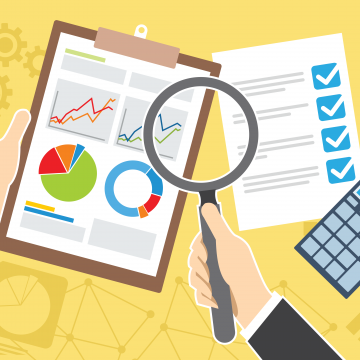Recently the Small Business Association (SBA) issued new guidance on obtaining new PPP loans. Before we get into how to apply, it is important to understand eligibility for each program.
Eligibility
First Draw Loans
The original loan program, now referred to by the SBA as a “First Draw Loan,” has been revived and is extended to March 31, 2021 (previously the application deadline expired August 8). Assuming eligibility, anyone who has not received a First Draw Loan can still apply.
There are some updated rules on eligibility, permissible/forgivable uses, and application process. Updates include, borrowers of a First Draw Loan must have been in business as of February 15, 2020.
Note: Any new business or independent contractor who went into business after February 16, 2020 is ineligible for ALL PPP loans.
Those interested in learning more about eligibility can check out our article, “Stimulus Bill is Official – Here’s what it means for you!”
Second Draw Loans
Under the “new” program, referred to by SBA as a “Second Draw Loan,” only businesses who obtained a First Draw Loan can obtain a Second Draw Loan. It is called a Second Draw Loan, not a Second Round Loan.
The Second Draw Loan requires borrower to have suffered a 25% or more reduction in “gross receipts” in any calendar quarter of 2020 as compared to the same quarter in 2019. If gross receipts were not down 25% or more in any 2020 calendar quarter as compared to the same quarter in 2019, but total 2020 gross receipts are more than 25% down compared to total 2019 gross receipts, the business is still eligible for a Second Draw Loan. All PPP borrowers (whether for First Draw Loans or Second Draw Loans) can now use 2019 or 2020 payroll expense numbers in determining their maximum loan amounts.
Note: A borrower can apply for a Second Draw Loan before all First Draw Loan funds are used, but the First Draw Loan funds must be used in full before the disbursement of the Second Draw Loan.
What are Gross Receipts?
Generally, “Gross receipts” are considered “total income” (or in the case of a sole proprietorship, independent contractor, or self-employed individual “gross income”) plus cost of goods sold and excludes net capital gains or losses as these terms are defined and reported on IRS tax return forms.
Receipts include all revenue in whatever form received or accrued (in accordance with the entity’s accounting method) from whatever source, including from the sales of products or services, interest, dividends, rents, royalties, fees, or commissions, reduced by returns and allowances.
Gross receipts do not include:
- The amount of any forgiven First Draw PPP Loan;
- Taxes collected for and remitted to a taxing authority if included in gross or total income (such as sales or other taxes collected from customers and excluding taxes levied on the concern or its employees);
- Proceeds from transactions between a concern and its domestic or foreign affiliates;
- Amounts collected for another by a travel agent, real estate agent, advertising agent, conference management service provider, freight forwarder or customs broker;
- “All other items, such as subcontractor costs, reimbursements for purchases a contractor makes at a customer’s request, investment income, and employee-based costs such as payroll taxes, may not be excluded from gross receipts.”
Applying for a Second Draw Loan
To apply for a Second Draw Loan, the applicant must submit to the lender, SBA Form 2483-SD (Paycheck Protection Program Second Draw Borrower Application Form) or the lender’s equivalent form.
At the time of submission, the applicant must send the following, unless the documentation previously was given to the lender for the First Draw PPP Loan (e.g., the applicant used calendar year 2019 figures to determine both its First Draw PPP Loan amount and its Second Draw PPP Loan amount, and the lender for the applicant’s Second Draw PPP Loan is the same as the lender that made the applicant’s First Draw PPP Loan):
If the applicant is not self-employed
- Form 941 (or other tax forms containing similar information) and state quarterly wage unemployment insurance tax reporting forms from each quarter in 2019 or 2020 (whichever was used to calculate payroll), as applicable, or equivalent payroll processor records, along with evidence of any retirement and employee group health, life, disability, vision and dental insurance contributions.
- A partnership must also include its IRS Form 1065 K-1s.
If the applicant is self-employed and has employees
- 2019 or 2020 (whichever was used to calculate loan amount) IRS Form 1040 Schedule C, Form 941 (or other tax forms or equivalent payroll processor records containing similar information) and state quarterly wage unemployment insurance tax reporting forms from each quarter in 2019 or 2020 (whichever was used to calculate loan amount), as applicable, or equivalent payroll processor records, along with evidence of any retirement and employee group health, life, disability, vision and dental insurance contributions, if applicable.
- Payroll reports showing applicant was in business on February 15, 2020.
If the applicant is self-employed and does not have employees:
- 2019 or 2020 (whichever was used to calculate loan amount) Form 1040 Schedule C
- 2019 or 2020 (whichever was used to calculate loan amount) IRS Form 1099-MISC detailing nonemployee compensation received (box 7), invoice, bank statement, or book of record that shows that the applicant is self-employed.
- 2020 invoice, bank statement, or book of record to prove that the applicant was in operation on or around February 15, 2020.
Loans with a principal amount greater than $150,000, documentation sufficient to show that the applicant experienced the 25%+ reduction in revenue must be provided at the time of application, which may include relevant tax forms, including annual tax forms, or, if relevant tax forms are not available, a copy of the applicant’s quarterly income statements or bank statements.
For loans with a principal amount of $150,000 or less, the applicant must submit sufficient documentation to prove that the applicant experienced the 25%+ reduction in revenue as of the time of application, on or before the date the borrower applies for loan forgiveness, or, if the borrower does not apply for loan forgiveness, at SBA’s request. Such documentation may include relevant tax forms, including annual tax forms, or, if relevant tax forms are not available, a copy of the applicant’s quarterly income statements or bank statements.
When Should I Apply?
Deadline to apply for any PPP loan– First Draw and Second Draw– is March 31, 2021. Therefore, new borrowers and Second Draw borrowers must act quickly. Of course, the allocated funds could run out before March 31st, so no one who is eligible and interested, should drag their feet thinking they still have over 2 months to get things together.
Given some of the tax forms needed for application of Second Draw Loans, many eligible businesses will be scrambling to get those forms and records completed ASAP, which certainly will put a strain on accountants and tax return preparers.
Conclusion
The key overall takeaway is understanding the difference between the two programs. First Draw Loans are PPP loans made to first-time borrowers under the original program’s rules, as have been updated from time to time. Second Draw Loans can only be made to borrowers who took First Draw Loans, used all the funds, and still suffered the 25%+ reduction in gross receipts.
Nothing in this writing is intended to be and should not be viewed as advice, that you should in-fact obtain a PPP loan if you have not already. As a business owner, take time to decide if a PPP loan makes sense for your business. We are here for you, please do not hesitate to contact your Carlile Patchen & Murphy LLP attorney if you have any questions about PPP or other COVID-related relief programs.





0 Comments